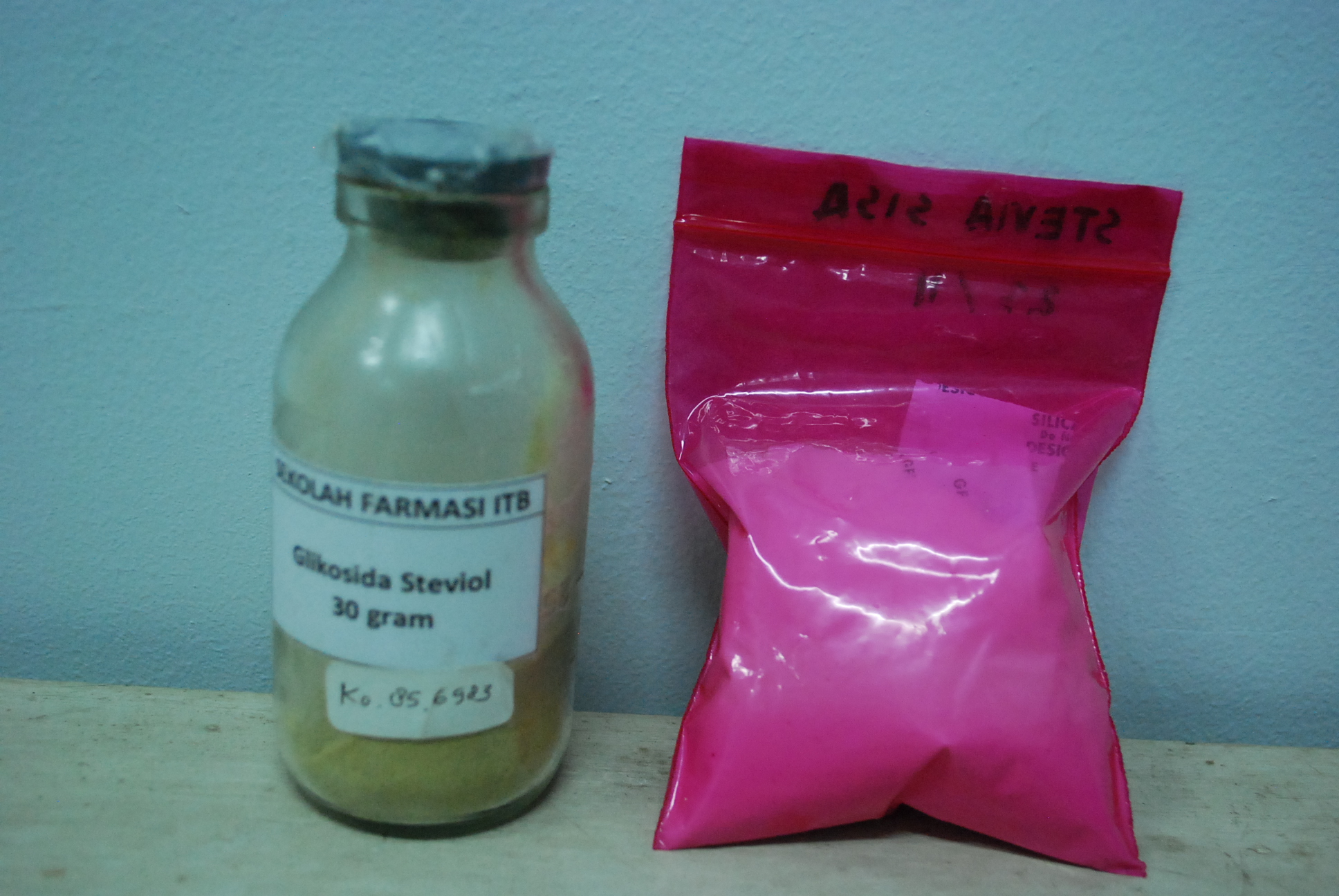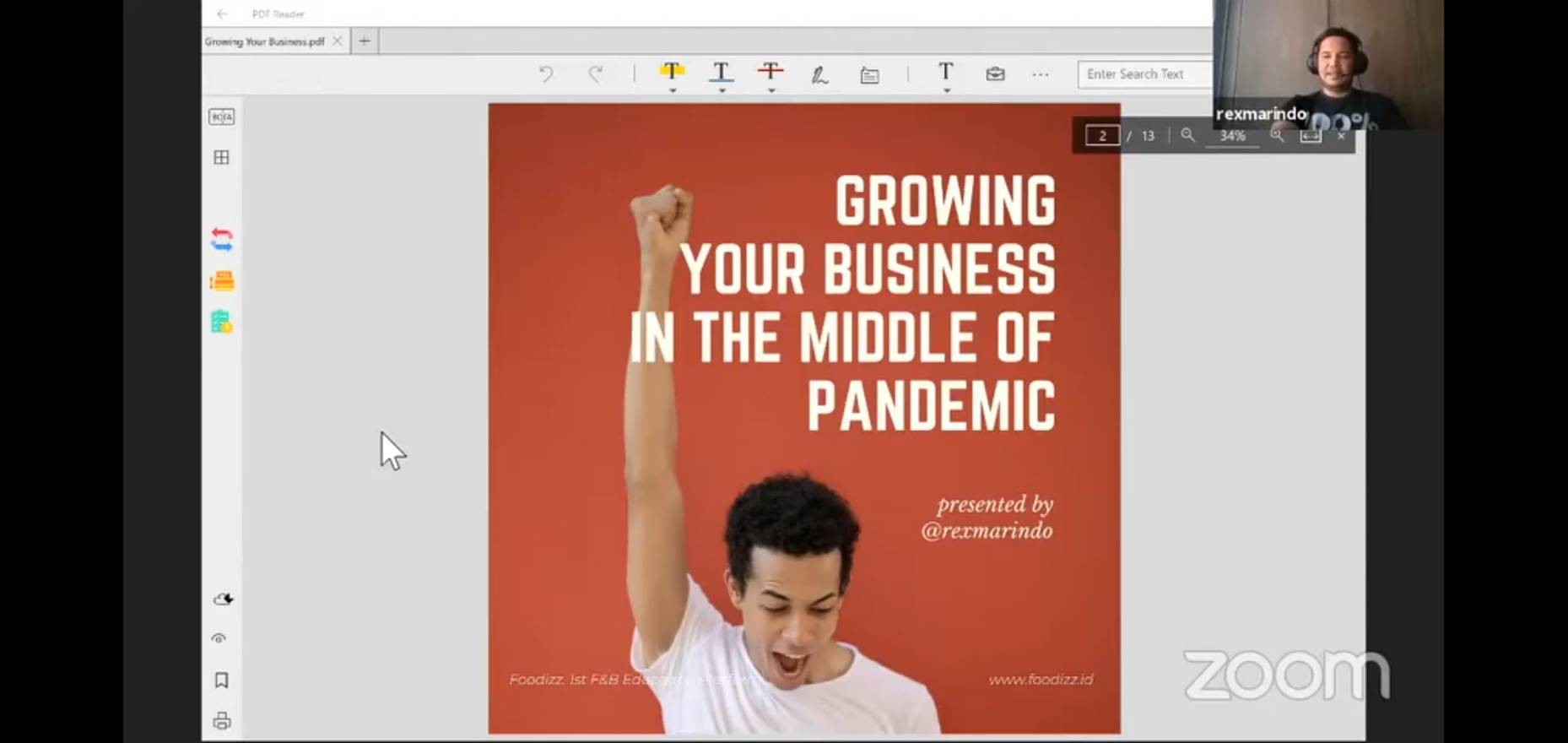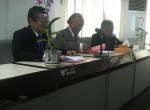ITB Lecturer Develops Natural Sweetener from Stevia
By Ahmad Fadil
Editor Ahmad Fadil

BANDUNG, itb.ac.id – Stevia leaf contains high content of sweet compound (steviol glycoside, SG). The sweetness of SG, a product of extraction from stevia leaf, is 300 times higher than sugar. Hence, it is used as substitute for sugar, especially to people with low calorie diet.
SG has long been used and declared safe as natural sweetener by Codex Alimentarius Commission (CAC), an international organization under FAO and WHO in charge of issuing various standards for food. In Indonesia, the natural sweetener is still fully imported even though the plant, Stevia Rebaudiana Bertoni is suitable for planting on highlands in Indonesia such as in Ciwidey, Bandung Regency. Until now, no industry in Indonesia extract stevia leaf and produce SG commercially.
That condition brings a team of researchers and lecturers from School of Pharmacy of Institut Teknologi Bandung (SF-ITB) to conduct a research that carries out topic about “Development of Production Process of Steviol Glycoside Natural Swetener from Stevia”. The team consists Dr.rer.nat. Rahmana Emran Kartasasmita, M.Si,. Apt., Dr. Elfahmi, M.Si., Apt., Dr. Muhammad Insanu, M.Si., Apt., and Dr. As’ari Nawawi, M.Si., Apt.
As high intense sweetener, just small amount is sufficient to give sweet taste. For illustration, in order to sweeten a cup of drink, only 30-40 mg of SG—usually put in a sachet—is needed. Another benefit is SG does not contain calorie, so it will not rise blood sugar after consumption. Thus, this natural sweetener is suitable for people with diabetes or people in need for low calorie intake such as people in low calorie diet.
One of the researchers, Rahmana Emran Kartasasmita explained that the research began since 2012. However, the research was still in laboratory scale that time. In 2015, the team received research fund from Ministry of Health under Fasilitasi Pengembangan Bahan Baku Obat (BBO) dan Bahan Baku Obat Tradisional (BBOT), or Development of Medicine Raw Material (BBO) and Traditional Medicine Raw Material (BBOT) Facilitation Program.
Emran explained that, with the abundant benefits of stevia sweetener, both for economy or health, he hopes that SG could be produced from stevia planted in Indonesia. The regulation has allowed SG usage for food products under Head of BPOM regulation since 2014. “We the researcher team want natural sweetener to be produced in Indonesia so it does not need imports, considering stevia as the raw material is suitable for grown in Indonesia especially in Ciwidey,” Said Emran on Monday (9/7/2018).
Furthermore, Emran explained that every hectare can lay 50,000 seeds with production capacity of 12 ton of wet leaves within 12 times harvest or about 1.2 ton of dried leaves. According to an analysis, dried stevia leave contains around 10% SG, which means in 1.2 ton, 120kg of SG can be obtained in a year. Currently, yearly need for stevia in Indonesia is around 350 ton. If 10% of that need, or about 35 ton a year a year is produced in Indonesia, the total area needed to plant stevia is 292 hectare. However, only a few hectare is ready in Ciwidey. Fortunately, local government will support stevia as their special product and facilitate planting area. Stevia planted in big scale will support industry to produce SG as natural sweetener.
“As long as I know, in order to plant stevia on commercial scale, there are many rentable areas in Ciwidey. Stevia is already planted in Ciwidey, but since no industry needs stevia in massive quantity, farmers are not interested to plant it on wider areas. The currently produced stevia is merely dried and sold as dried stevia leaf by farmers” said Emran.
Extraction Process
Stevia belongs to family asteracaeae (compositae). The bush plant grows 60-90 cm tall, has many branches, has elongated thick green leaves, has small stems and hairy. It is not difficult to extract the leaf. The harvested leaf is sorted and dried. The dried leaf is then threshed from the stalk. After that, machine is used for grinding process. The resulted powder is then extracted using several techniques, either using water or other solvents allowed for food processing. The final step is purification and crystallization into white SG powder.
“All of the results of this research have been reported and submitted to Ministry of Health as the funder. For the follow up of stevia production on commercial scale, Ministry of Health will facilitate if any industry is interested. Therefore we hope there are industries that are interested and will follow up on the result of this research,” He concluded.
Reporter: Adi Permana

.jpg)
.jpg)
.jpg)
.jpg)
.jpg)



